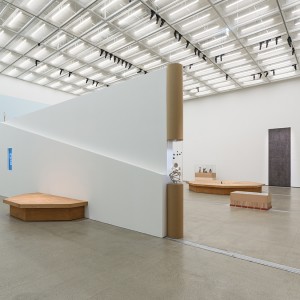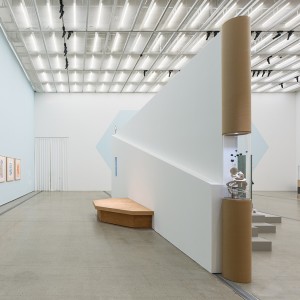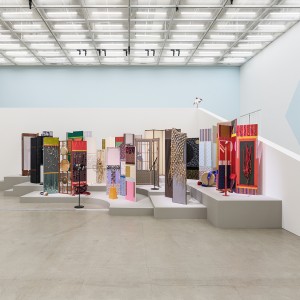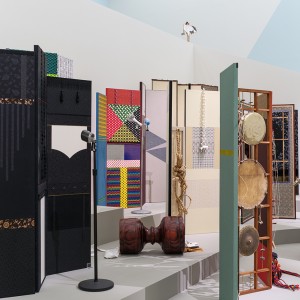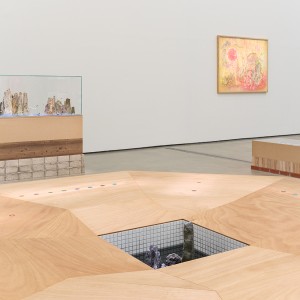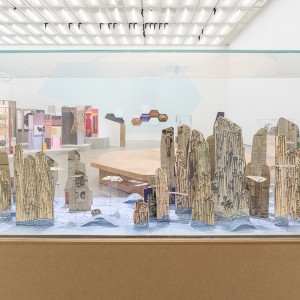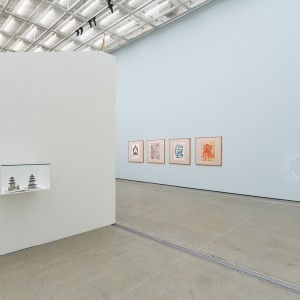Kim Jipyeong
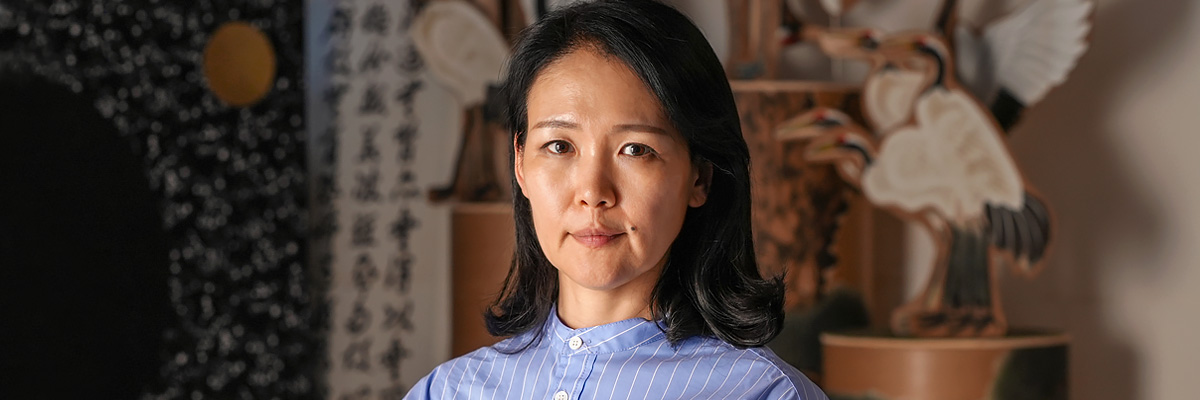
Interview
CV
Born in 1976, Seoul
Lives and works in Seoul
Education
2001
M.Ed in Art Education, Ewha Womans University, Seoul, Korea
1999
BFA in Fine Arts, Ewha Womans University, Seoul, Korea
Selected Solo Exhibitions
2023
Paintings Lost, Indipress Gallery, Seoul, Korea
2020
Friends from Afar, ARTSPACE BOAN 1, Seoul, Korea
2019
Giam Yeoljeon, Gallery Meme, Seoul, Korea
2017
Jaenyo Duk Go: A Talented Woman Has Higher Virtue, Hapjungjigu, Seoul, Korea
2015
Pyongan-Do, Art Company GIG, Seoul, Korea
2013
Gyeol, Gana Art Contemporary, Seoul, Korea
2009
Yellow+Purple, CAIS Gallery, Hong Kong
2007
Border Life, Insa Art Center, Seoul, Korea
2003
Chaekgeori, Gallery LAMER, Seoul, Korea
Selected Group Exhibitions
2025
Korea Artist Prize 2025, National Museum of Modern and Contemporary Art, Seoul, Korea
2024
Worlds Beyond Extraordinary, Minhwa and K-Pop Art Special Exhibition, Gyeonggi Museum of Modern Art, Ansan, Korea
That’s what we did, The Page Gallery, Seoul, Korea
Seeing in the Dark, Busan Biennale 2024, Busan Museum of Contemporary Art, Choryang House, Busan, Korea
2023
Barely, Naturally, space99 of Peace Museum, Seoul, Korea
2022
MMCA Artbank·Government Artbank Project: Public × Kim Jipyeong, Gangnamdaero G-LIGHT Media, Seoul, Korea
Past. Present. Future, SONGEUN, Seoul, Korea
2021
21st SONGEUN Art Award, SONGEUN, Seoul, Korea
Ahuh Darongdiri, ThisWeekendRoom, Seoul, Korea
Sunset, Sunrise, Modern and Contemporary Art Exhibition, Gyeongnam Art Museum, Changwon, Korea
Sugar and Salt, SoolSool Center, Seoul, Korea
2020
Collecting for All-Reference Room, Seoul Museum of Art, Seoul, Korea
2019
Drawing Room, Art Space Pool, Seoul, Korea
Feasts on Paper, Shanghai International Paper Art Biennale 2019, Fengxian Museum, Shanghai, China
Shan Shui: Nature Oppressed, Lee Ungno Museum, Daejeon, Korea
Spectres in the Library, SeMA Storage, Seoul, Korea
2018
Imaginary Passage, Yeongang Gallery, Yeoncheon, Korea
2017
Vision & Perspective 1999–2017, Busan Museum of Art, Busan, Korea
Ha-Neul Bonpuri, Zaha Museum, Seoul, Korea
Geun Rae An Bu Mun Yeo Ha, Indipress Gallery, Seoul, Korea
2016
How to Sit, Indipress Gallery, Seoul, Korea
Art in Society – Land of Happiness, Buk-Seoul Museum of Art, Seoul, Korea
2015
Lived Time of Dongsong, REAL DMZ PROJECT 2015, Dongwon Korean Medicinic Clinic, Cheorwon / Art Sonje Center, Seoul, Korea
2014
MANSHIN ArtWork, Art Nine, Seoul, Korea
2012
Meta Empire, EXCO, Daegu, Korea
Extraordinary Minhwa, Woljeon Museum of Art Icheon, Icheon, Korea
The Garden with Plum Blossom, Whanki Museum, Seoul, Korea
Chaekgeori Screen Painting: History of Studies from the Joseon Dynasty to Modern Times, Gyeonggi Province Museum, Yongin, Korea
2010
No more Daughters & Heroes, Aram Art Museum, Goyang, Korea
Books and Paintings, Keumsan Gallery, Paju, Korea
The Legend of Royal Tombs, Aram Art Museum, Goyang, Korea
2009
Ongojishin, Gana Art Center, Seoul, Korea
Cheak-Ga-Do, Bukchon Art Museum, Seoul, Korea
2008
Meme Trackers, Songzhuang Art Center, Beijing, China
2007
Minhwa for Children, Gyeonggi Province Museum, Ansan, Korea
Incheon Women Artists’ Biennale, Incheon Culture & Arts Center, Incheon, Korea
Peony after Peony, Daejeon Museum of Art, Daejeon, Korea
2006
Woman Power, Papertainer Museum, Olympic Park, Seoul, Korea
2005
Vision & Perspective, Busan Museum of Art, Busan, Korea
Mix & Match, Daejeon Museum of Art, Daejeon, Korea
Portfolio 2005, Seoul Museum of Art, Seoul, Korea
Remake Corea, Coreana Museum of Art, Seoul, Korea
SeMA 2004 – Six Stories, Seoul Museum of Art, Seoul, Korea
2004
Spring Towards outside of Boundaries, Gallery Cott, Seoul, Korea
Praise for Still Life, Ilmin Museum of Art, Seoul, Korea
2001
Hurts and Healing, Seoul Arts Center, Seoul, Korea
Unlimited Light New Bud Flexed Muscles, Jeongdok Library, Seoul, Korea
Selected Curatorial Projects
2020
Sansumunhwa Academy, Sansumunhwa, Seoul, Korea
2019
The Stars Below, Sungnyemun, Sansumunhwa, Seoul, Korea
2011
Jip Jeon-Housing Project, Eon Gallery, Seoul, Korea
Selected Grants
2020/2023
Grant for Arts Creativity Support, Seoul Foundation for Arts and Culture, Korea
2019–2020
Grant for Arts Space Support, Seoul Foundation for Arts and Culture, Korea
Selected Residencies
2012
Art Studio Ryuan, Seoul, Korea
2008
Cité Internationale des Arts, Paris, France
2006
Gana Atelier, Yangju, Korea
Selected Publications
2025
Kim Jipyeong·Kim Kyeongyeon·Park Chan-kyong·Soh Jeanhyoung·Lee Eunju·Im Okhee·Cho Insoo·Lu Carol Yinghua·Han Yoonah. Friends from Afar – Kim Jipyeong’s Works and Criticism. Seoul: Tigress on Paper
Selected Collections
Amorepacific Museum of Art, Korea
Gyeongnam Art Museum, Korea
Ilju Academy and Culture Foundation, Korea
National Museum of Modern and Contemporary Art,
Art Bank, Korea
Seoul Museum of Art, Korea
Servais Collection, Belgium
SONGEUN Art and Cultural Foundation, Korea
Yangpyeong Art Museum, Korea
Critic 1
Slow and Steady: Crafting New and Old Worlds Through the Artwork of Kim Jipyeong
Vera Mey (Lecturer in Art Curating, Department of History of Art at University of York)
When encountering the work of Kim Jipyeong, we are initially introduced to objects that could easily be dismissed as a theatrical backdrop to the main actors, what could be colloquially referred to as “just part of the furniture.” However, upon closer observation, what becomes noticeable is the “agency” of these art objects, to borrow from anthropologist Alfred Gell,1 as they carry autonomy not dissimilar to the way people perceive themselves as entities with the capacity to invoke consequences and effects in the world. In this regard, upon entering Kim’s installation, we are drawn into universe after universe where our subjectivities are confronted by materials that facilitate an otherworldly encounter through the artist’s labour in crafting materials steeped in traditional Korean arts. This essay serves as a walk-through of the works presented in Korea Artist Prize 2025 exhibition at MMCA, through the lens of “worlding,” a notion that can be loosely described through the philosopher Martin Heidegger, whereby the world is brought into being through literally objectifying, or “thinging,” it into existence.2
Screening Different Visions of Samsara
Folding screens, or Byeongpung, have long existed in Korean decorative and fine arts as objects historically noted for adorning dynastic and aristocratic households. It was believed that folding screens were often placed at the back of a room, with the term Byeongpung even referring to an object that has no significant presence or impact.3 Korean religious and cultural rituals and traditions have historically been syncretised from a myriad of intercultural interactions—not least those that developed indigenously on the peninsula and those marked by contact with outsiders, often colonial communities, even within Asia. The result of these interactions is evolving traditional forms observable through objects initially designed to aid in everyday beautification. Within this Korean tradition, a link exists between the landscapes depicted on these screens; one of the most frequently cited is Sea, Cranes, and Peaches (1902) in the collection of the National Museum of Korea, which was initially part of the collection at the Honolulu Art Museum in the United States. This screen elegantly depicts its namesake in forms where patterns and iconographies collapse, with images of clouds and sky appearing seamlessly together like wallpaper. Negative space is indicated through opulent gold leaf. Cranes and peaches infiltrate the composition as if to depict the abundance and undisturbed landscape of the natural world.
Versions of these types of masterfully crafted screens exist across various contexts in East Asia and are often contentious in their historicisation regarding the “origin” or their sources and the national frameworks into which they fit. They often serve as significant indices to validate national styles and identities, as well as demonstrate gift-giving cultures and diplomatic stylistic evolutions across East Asia.4 However, in Kim Jipyeong’s work, although she is trained in both Dongyanghwa (Eastern painting) and ink painting in what has been called the “genre of self-reflection,”5 there is a departure from viewing these forms solely as indicators to valorise tradition blindly. Kim utilises the materials of everyday aestheticisation, such as picture books transformed into dioramas as seen in the series Pop-up Sansu (2023–2025), and in the series Polyphonic Chorus (2023–2025), the upcycling of vintage screens with renewed archetypal figures from everyday Korean folklore and life markedly differs from the distant grandeur of those found in stately collections mentioned in the previous paragraph. Instead, Kim’s screens hint at domesticated forms of everyday beautification but also open the possibility of another world through the creation of artworks that are full of agency—embodied actors through their material form. Through the craftsmanship imparted by her human labour of collecting and collaging materials together, the objects adopt animistic tendencies, particularly as they point to other bodies through the designation of archetypes for each screen. They are no longer removed from the viewer’s experience as an idealised projection of nature but instead exist within the realm of encounter with figures one would find in Korean everyday life.
While the purpose of folding screens may have been more aesthetic than functional, they also serve as objects that create an illusion of division in an open domestic space, commonly used to protect modesty when changing clothes. Their allure lies partly in their ambiguity as instruments that obscure sight, which also means they can be objects through which to sneak a peek romantically. In Kim’s work, the screen becomes a device that embodies another type of ambiguity, representing archetypes of various Korean figures: the shaman, an ‘auntie,’ a diva, a soldier, a salary man, a rockstar and others, signified through various indices of pattern and clothing that the artist has assembled together as if some kind of skin or even clothing on the screen. Rather than facilitating the seductive game of flirtatious human activity, the screens of Kim, rather, act as animistic stand-ins for the diverse individuals that constitute the social and visual landscape of life in Korea. They serve as portals to positions and worlds beyond our singular experience and as points of connection, all demonstrating the spectrum of everyday life—a kind of Samsara, the Buddhist concept of the cycle of life and death that we all currently traverse, even across various stages of Korean life.
What this meeting offers through these iconographic archetypes is perhaps its form of animist “encounterism” with these objects as if they were people. Through the screens, and observing them as a medium through which to transcend our minds and step into another world, they are subversions of traditional screen paintings. In European Enlightenment-era thinking, the dialectics of encounter were of course, contained in the illusory and ideological divide between the “self” and the “other.” Within a Buddhist framework, however, this division collapses. In Buddhism, which holds its own distinct beliefs about the role of enlightenment, there is no self, only the “nonself.”6 Furthermore, “encounterism” has been described by the art historian Roger Nelson as an interaction, a “contradistinction” from ideas of primitivism, which posits a hierarchical and politically fraught distinction between the self and the other.7 This idea differs from the notion that estrangement and distance occur when confronted with difference. Rather, through making the banal and everyday beautiful through a range of a cast of characters in Kim’s screens, a curiosity around difference is brought not through the inaccessibly stately, but rather the everyday.
A key aspect of animism is the belief that objects possess a soul. It does not limit the possibility of something being alive to only being sentient. The human hand of the artist in this instance arguably mirrors the function of the shaman that is present in one of the screens, as a medium who facilitates encounter with beings that are emergent in non-human and even more-than-human materials. Made up of a patchwork of different fabrics, these screens allow us to recognise a human subjectivity within a conventionally inanimate object. The role of the shaman in Korean culture has been contested historically as an affront to the introduction of different religions which entered the country through the onset of modernity. Shamanism and animism in Korea, however, has viewed the domain of the household as a particularly charged arena of both spirits and ancestors that require care and tending to.8 Shamans also act as protectors against bad fortune and even worse spirits. Animism, unlike major monotheistic religions popular in contemporary Korea, also uniquely offers a form of syncretism commonly found within Asian cultures, providing portals for diverse cultural engagement and arguably a form of cosmopolitanism of sources avant la lettre. We can even consider the shaman’s ability to travel, metaphorically, between different realms as similar to objects and artworks that traverse a more-than-human scale of planetary living.
A further analogy between the shaman and artist can be made through the role of the artist’s ability to transport viewers and material, where the human hand offers not only the act of creation of something but also an imprint of a particular time and place. Art historian Pamela Corey has described the relationships between craft and conceptualism as “a haptic gesture with ethnic identity,” whereby the evidence of representation is partly through this hand labour process of creation which serve “performatively declaring the nature of their objecthood.”9 In regards to traditions of ink, and in this case screen painting, the diverse and hybrid tendencies of screens in traditional craft cultures are both localised through pointing to familiar figures yet take on an iconic status that can translate beyond traditional and nationalist oriented frameworks.
Carrying the Weight of the World
The new artwork by Kim Jipyeong, Cosmic Turtle (2025), can arguably be seen as an understanding of how epistemologies reside in the “more-than-human” or what has been described as “multinaturalisms” or more simply put, the capacity for interdependence of different forms of species and beyond centring human consciousness as exceptional.10 The title of the artwork is a reference to a familiar mythology of a turtle carrying the whole world on its shell. We can read this as a metaphor for an entire knowledge system and could even be interpreted as an expression of burden through the aphorism in English: “carrying the weight of your world on your shoulders.” It’s a narrative that echoes the Greek mythological character Atlas, who also carried the earth on his back, a burden that was punishment for rebellion against the Olympian gods.
The idea of “slow and steady,” is often associated with the characteristics of the turtle from the fable of the tortoise and the hare. The turtle presents itself as a persistent yet consistent animal who, despite the limitations of its physical body, can accomplish feats through knowledge and strategy. It forms a plethora of references that are associated with the turtle as a symbol synonymous across cultures in Asia, Africa, and indigenous cultures across the Americas as well as the Pacific. At the same time, Jipyeong fragments the Cosmic Turtle into different portions of a wood block print scattered around the installation. Its presence, even if sculptural and metaphorical, hints at the ideas of worlds within worlds that the artist is drawing upon, as well as a syncretism and encounter with a more-than-human world.
In Kim’s Cosmic Turtle, by hinting at the printing press, we are prompted to consider the way ideas travel in the world, carrying knowledge and imprinting it quite literally through the process of wood in contact with paper. The first printed book featured a Korean technique of paper production made from mulberry, a similar material that would later be used to carry illustrations and paintings on folded screens. Arguably, the world has been brought together as “an imagined community” through the proliferation of what scholar Benedict Anderson called “print capitalism,” a shared understanding fostered by the circulation of language through print, enabled by affordable materials like paper and the mechanical reproductions of block printing. These innovations allowed for the production of texts at a rate that disseminated messages far and wide. Long before the advent of the Gutenberg press—which famously spread the Bible throughout Europe around 1440—and is often mistakenly credited as the world’s first printing press, there was the famed Koryo print, which would be well known to the local Korean audiences, originating in 1234, 200 years prior to Gutenberg’s advancements. The first printed book was a Confucian text. The oldest surviving woodblock print is believed to be the Pure Light Dharani-sutra, a Buddhist scroll dating to 684 and 704 and discovered in 1966 at the Bulguksa Temple in Gyeongju. Another Buddhist text, the Diamond Sutra dating to 868, is arguably the first book produced freely without copyright, due to an expression at the end of the sutra stating it should be for universal free distribution.
Artwork as Offering
In an installation made up of Korean archetypes through Polyphonic Chorus and wood block fragments in Cosmic Turtle, we can perhaps consider this constellation in Kim Jipyeong’s work a kind of charged domestic space, where the artworks are imbued with potential to be animated, further observing audiences as they are being observed. In domestic spaces, spirits often require attention and tending to, and offerings that are caringly given are standard, as a way of keeping them alive. Even though Kim Jipyeong is steeped in courtly and masterful traditions of artistry through her extensive training in Korea’s cultural traditions, in some respects, there is a celebration of the earthly, hardworking and humble, even when dealing with the mythological. The turtle, the soldier, the diva-grandmother, the shaman, the lone salary man—these are all figures rarely as major characters in history, and rather just carry the world along, making it as they live in.
1. Alfred Gell, Art and Agency: An Anthropological Theory (Oxford: Clarendon, 1998).
2. R. Raj Singh, “Heidegger and the World in an Artwork,” The Journal of Aesthetics and Art Criticism 48, no. 3 (1990): 215–222.
3. Han-Sol Park, “AmorePacific Museum of Art Brings Joseon-Era Folding Screens to Center Stage,” The Korean Times, Jan. 31, 2023, https://www.koreatimes.co.kr/lifestyle/arts-theater/20230131/amorepacific-museum-of-art-brings-joseon-era-folding-screens-to-center-stage.
4. Kim Soojin, “Desire for an Empire: The Painted Folding Screen Sea, Cranes, and Peaches at the Honolulu Museum of Art,” Journal of Korean Art and Archaeology (JKAA) 12 (2018): 45.
5. Lee Youngwook, Park Chan-kyong, “How To Sit Properly: Tradition And Art,” in Kim Hang et al., MMCA Artist Studies 2, Park Chan-kyong: Red Asia Complex (Seoul: MMCA, 2019).
6. Ashley Thompson, “In the Absence of the Buddha: ‘Aniconism’ and the Contentions of Buddhist Art History,” in A Companion to Asian Art and Architecture (Hoboken: John Wiley & Sons, Ltd, 2011), 398–420.
7. Roger Nelson, “‘My World Is Modern’: Deprovincialising Chen Cheng Mei and You Khin, Artists from Southeast Asia Who Traversed the Global South,” Southeast of Now: Directions in Contemporary and Modern Art in Asia 5, no. 1 (2021): 205–249.
8. Laurel Kendall, Shamans, Housewives, and Other Restless Spirits: Women in Korean Ritual Life, Studies of the East Asian Institute (Honolulu: University of Hawaii Press, 1987).
9. Pamela N. Corey, “Beyond Yet Toward Representation: Diasporic Artists and Craft as Conceptualism in Contemporary Southeast Asia,” The Journal of Modern Craft 9, no. 2 (May 3, 2016): 161–181.
10. Jamie Lorimer, Timothy Hodgetts, More-than-Human (Abingdon, Oxon: Routledge, 2024).
Critic 2
The Contemporaneity of Dongyanghwa (Eastern Painting) ― An Essay on Kim Jipyeong’s Work
Kim Hong-Ki (Art Critic)
Painting is a slow medium. But it wasn’t slow to begin with. It has simply maintained its own steady rhythm and pace. What has truly accelerated is the dizzying speed of modern civilization, driven by the relentless progress of technology and industry. These developments have swiftly transformed the means of artistic expression. With the invention of photography came a way to represent reality far more quickly and accurately than painting could. The advent of cinema enabled the depiction not only of space but also of time, and video technology introduced the real-time production and transmission of moving images. Today, digital media offers an environment where every kind of audiovisual information can be instantly encoded, integrated, and transmitted. This unfolding evolution of media technologies has accelerated time itself. In the digital environment especially, time becomes atomized. As philosopher Byung-Chul Han writes, “This is also what causes the feeling that time is going by much faster than it used to. Because of the temporal dissipation, experiencing duration is impossible. Nothing holds time. Life is no longer embedded in the ordering structures or coordinates that grant duration.”1
Fragmented time gives rise to a certain illusion. When the experience of duration is no longer possible, we are led to mistakenly believe that the present is made up solely of moments that pass by with increasing speed. Time is now defined by ultrahigh-resolution images that stream instantaneously, by news that is responded to across the globe in real-time, by the fantasy that life over there is no different from life here, and by a fully synchronized world where things are constantly outdated and updated. Yet with just a moment’s reflection, we realize that surprisingly few things are actually governed by the pace of accelerated technological progress. Since ancient times, the Earth has completed its yearly orbit around the sun, and in that cycle, the moon has waxed and waned twelve times. Pregnant women still carry their children for roughly ten months before giving birth. Most human hearts continue to beat at much the same tempo as they always have. The curious rock formations of Korea’s storied mountains endure in their own mineral time, indifferent to shifts in climate or the rise and fall of geopolitical regimes. The half-life of radioactive substances has remained unchanged since the birth of the universe. Just as there are countless things that have been accelerated by technology, so too are there many that continue in unhurried, steady rhythms of their own. Together, they form our contemporaneity. Slowness, after all, is only ever relative. And painting is one such thing.
To be precise, painting is not inherently a slow medium; it has become one in our time. And within atomized time, it has come to bear the suspicion of having fallen behind the flow of contemporaneity. Among painting traditions, Dongyanghwa (Eastern painting) faces a double indictment. Because the Industrial Revolution was driven by the West, Eastern painting was already regarded not only as part of an outmoded medium, but as something doubly obsolete, an outdated form from an allegedly backward East. Suddenly branded with this stigma, Eastern painting withdrew into what was perceived as the opposite of the contemporary: “tradition,” while simultaneously struggling to leap into the present. Under the banner of “modernizing tradition,” it sought to reinvent itself in order to catch up with the rapid pace of contemporary life. Treated as doubly behind, Eastern painting came to be likened to a turtle moving at its deliberate pace. Yet contrary to Zeno’s paradox, this slow creature placed upon itself the impossible burden of accelerating fast enough to catch up with the far-ahead Achilles. This overdetermined role stems from the optical illusion created by dispersed time. The deceptive binary between “fast modernity” and “slow tradition,” born of our infatuation with speed, absurdly urged Eastern painting to become a turtle dreaming of outrunning itself.
Kim Jipyeong pursues painting as a slow medium without being trapped in nostalgia for the past. While she holds a special interest in the Eastern, she does not regard it as a distant tradition that needs reviving. This is because the contemporaneity she inhabits is a time in which slowness exists alongside speed, and the East she engages with is not necessarily identical to a tradition confined to the past. She maintains a thoroughly contemporary stance, contemplating and practicing Eastern painting as it emerges from within that framework. In this sense, Park Chan-kyong has noted that Kim’s work “does not exist solely ‘within’ traditional painting or contemporary art, but rather ‘speaks about traditional painting and contemporary art.’”2 For Kim, the question of tradition versus modernity is not a matter of either/or, but rather two distinct temporal rhythms that together comprise her contemporaneity. To her, Eastern painting is as modern as it is traditional, and the slowness of Eastern painting defines the character of her contemporary moment just as much as the speed of modern civilization does. Therefore, when she “speaks about traditional painting and contemporary art” without privileging one over the other, she is ultimately engaging with the complex and relative speeds that define contemporaneity as she experiences it.
The unhurried tempo of things that cannot be subsumed by accelerated media, and the persistent duration of history that cannot be dismantled by atomized time—these are embedded in the distinctive form of “contemporary art” that Kim Jipyeong’s work brings forth. Park Chan-kyong calls this tendency “rewinding,” suggesting that “when the ‘modernization’ of vernacular traditions intersects with the ‘rewinding of modernity (the West),’ it can escape from the rigid, goal-driven language of ‘modernizing tradition.’”3 If modernity is equated with the West and defined by the fast-forwarding of time, then Kim rewinds this simplified notion of modernity to reveal a more complex and dialectical reality of our time. Whereas modernizing tradition reflects a “rigid pursuit” born of blind desire for speed, “rewinding modernity (the West)” attempts to make visible what lies hidden beneath this narrow understanding of the contemporary. The “modernizing tradition” must always be thought together with the “traditionalizing modern.” Only through such a dialectical perspective can we fully grasp contemporaneity. Achilles is not the present of the turtle, nor is the turtle the past of Achilles. They are beings moving at different speeds within the same space and time. In this sense, the contemporaneity of art is understood through the dialectic of fast-forwarding and rewinding.
Eastern painting, imagined as a turtle, is not a laggard left behind by the times. This illusion holds only within the narrow vision created by the optical illusion of atomized time. We must broaden our perspective as much as possible—not merely in spatial terms, but above all in temporal ones. Put differently, we need not a narrow vision fixated on fleeting moments of the present, but an expansive view that can perceive the thickness of duration. Through such a perspective, Eastern painting reveals itself as a slow turtle, yet one that lives within a dense present. In this dense present dwell both the slow turtle and the swift Achilles. This is the temporality that shapes Kim Jipyeong’s Eastern painting and its contemporaneity. When she conceives works using so-called “traditional” formats such as folding screens or hanging scrolls, she does not regard herself as working with antique art. She buys these screens and scrolls on Karrot Market, a secondhand trading app.4 Because many people still require folding screens and scrolls for rituals or decoration, they continue to be produced and circulated today. When they become burdensome surplus, they are resold on Karrot Market. These inexpensive contemporary ready-mades—often featuring printed reproductions rather than original ink paintings, sometimes backed with newspaper—are the very materials she takes as sources for her work: modern, mass-produced objects traded on the same digital marketplace as the latest smartphones.
If we were to fully expand our sense of the thickness of duration, we might acquire a cosmic perspective. The countless stars scattered across tonight’s sky can be seen as a comprehensive map encompassing the full depth of duration that constitutes our contemporaneity. Each light we see comes from a star born at a different moment in time—some even from stars that have long since perished. There are also stars receding from Earth faster than the speed of light, whose signals can never reach us, yet they, too, exist somewhere in the night sky. The constellation of stars stretched before us, from time immemorial to the present, is like a flat tableau depicting the maximum span of duration that contemporaneity can contain. In this context, Giorgio Agamben writes: “To perceive, in the darkness of the present, this light that strives to reach us but cannot—this is what it means to be contemporary. This is why contemporaries are rare. And this is why being contemporary is, above all, a matter of courage.”5 Not everyone born in the same period or living in the same era is a contemporary. A contemporary is one who perceives not only the visible present but also other, invisible temporalities that coexist alongside it. True contemporaneity includes not only the speed of modernity but also the slowness of tradition, not only the present of tradition but also the tradition of modernity, not only the fast-forwarding of time but also the vector of rewinding. “Contemporaneity is thus a singular relationship with one’s own time, which adheres to it and, at the same time, keeps a distance from it through dislocation and anachronism.”6 The courage to affirm the phase shifts between temporal acceleration and deceleration, and to embrace the anachronisms that traverse chronological order. This is what ultimately makes us contemporaries.
The reason for likening Eastern painting to a turtle is primarily because both carry the image of slowness and being left behind. But there is another reason: Kim Jipyeong’s current exhibition is itself about the turtle. She presents Cosmic Turtle (2025) as its title. This “turtle of cosmos” suggests that Kim may well be one of those rare contemporaries—or at the very least, someone who deeply understands what it means to be one. The turtle of our time she evokes in this exhibition encompasses the entire duration of the cosmos.
According to ancient Chinese mythology, the turtle is closely linked to the origin of the cosmos.7 Consider, for instance, the myths of Hado 河圖 and Nakseo 洛書. Hado is a diagram of fifty-five dots said to have been borne from the Yellow River by a dragon-horse during the time of Fu Xi. Hado, composed of nine patterns formed by forty-five dots, is said to have appeared on the back of a turtle that surfaced from the Luo River when Yu the Great was working to control the great floods. Regarded as precursors to the Taiji and the Eight Trigrams, and foundational to the principles of the I Ching, these two diagrams have also been interpreted as cosmological maps oriented around the North Star.8 In these myths, the dragon-horse delivers the image 圖, while the turtle brings forth the written word 書. This act is said to mark the beginning of human civilization. In another Chinese myth, the turtle forms the very foundation of the world: its domed carapace is the sky, and its flat plastron is the earth. In this way, the turtle in Chinese mythological tradition represents both the basis of the cosmos and the origin of civilization. This is precisely where Kim Jipyeong’s Eastern painting, her turtle, takes its point of departure. The visual chronicle of Cosmic Turtle, rendered as a sequential narrative akin to the Buddhist Oxherding Pictures 尋牛圖, unfolds through images of constellations embroidered across the sky, a turtle bearing the Nakseo on its shell, and figures dancing within the turtle’s belly.
Yet in Kim Jipyeong’s work, this sluggish turtle of myth is not confined to the fleeting past as a relic overtaken and left behind by the nimble currents of modern civilization. The chronicle of Cosmic Turtle unfolds beyond its mythological origins, moving into scenes of modern technological prosperity and the destruction that follows in its wake. Some years ago, a dead sea turtle washed ashore on Korea’s eastern coast, its entrails containing a piece of plastic. When the foreign matter was rinsed clean, it revealed tiny letters densely printed on its surface: propaganda leaflets, symbols of ideological struggle and psychological warfare in a divided nation. The ancient turtle that once gifted humanity with written word had perished after swallowing a plastic scrap inscribed with that very gift. In Kim’s paintings, the ecological devastation wrought by hyper-industrial civilization is montaged together with the symbolic origins of that very system into the chronicle of Cosmic Turtle. This is the thickness of enduring time that she perceives—a temporality made legible—and the contemporary stance she claims through anachronism. From such a cosmic perspective, Eastern painting rewinds the present, forging contemporaneity not by matching the tempo of other contemporary art, but by asserting a slower rhythm all its own.
Kim Jipyeong’s stance toward Sansuhwa (landscape painting), or traditional landscape painting within Eastern painting, follows the same logic. For her, Sansuhwa remains a vital means of expression even today—unsurprisingly so, since mountains and rivers still cover most of the Korean peninsula, each maintaining its own temporal rhythm. These features of the land reflect a contemporaneity shaped by natural slowness, a pace that falls far short of modern civilization’s accelerating change. In Michae Sansu (Camouflaged Landscape) (2009), Kim depicts mountains, waterfalls, and rivers alongside military facilities camouflaged with paint, evoking the condition of national division. In Pyeongando (2014), she combines the styles of landscape painting and cartography, drawing from historical texts and using ink and gold pigment on canvas to represent the Gwanseo region—her maternal ancestral home, now inaccessible. In her current exhibition, Kim transforms the gallery itself into the space of a landscape painting. She installs an octagonal pavilion made of wooden panels, a structure typically found in traditional landscapes, and places artificial rocks and water at its center, employing Chagyeong 借景 (borrowed scenery) to three-dimensionally realize the compositional logic of Sansuhwa within the exhibition space. Viewers may sit in the pavilion, rest, and engage with the works. Clearly, this is not an installation designed as a time machine to simulate a bygone tradition. The landscape visible from within the pavilion is instead a scene in which past and present, tradition and modernity, Eastern painting and contemporary art are interwoven through the entangled tempos of speed and slowness that define Kim Jipyeong’s contemporaneity.
Within an artistic perspective where “modernizing tradition” and “traditionalizing modern” form a dialectical relationship, the very distinction between Western and Eastern art may well lose much of its significance. Once we move beyond the deceptive opposition of “fast modernity” versus “slow tradition,” the relationship between Western and Eastern art can be understood not as a conflict between the modern and the traditional, but as a difference in intensity and vector within the field of comprehensive contemporaneity. Within this interplay of fast-forwarding and rewinding, moments of anachronistic encounter between the respective histories of Western and Eastern art become particularly compelling. Consider, for instance, the fusion of image and text. In Western art history, major examples include Guillaume Apollinaire’s Calligrammes and Pablo Picasso’s Synthetic Cubism in the early twentieth century. Apollinaire gave visual form to the subject of his poems through their typographic arrangement, while Picasso collaged heterogeneous objects onto the canvas and incorporated suggestive lettering. In the East, by contrast, image and text have shared a common origin from the very beginning. As noted earlier in the myths of Hado and Nakseo, both Do 圖 (image) and Seo 書 (written word) emerged from the constellations. In ancient Chinese Oracle bone script 甲骨文, character and image were never separate. Moreover, Jebal 題跋 (the inclusion of colophons) in Eastern painting was hardly unusual. In the tradition of Muninhwa (literati painting), Siseohwa 詩書畵 (the trio of poetry, calligraphy, and painting) held equal and inseparable value. Even in the realm of Minhwa (folk painting), Korean Munjado (character paintings) show that text and image were not fundamentally distinct.
Within these leapfrogging “archives” of East and West, Kim Jipyeong discovers materials and forms suited to revealing contemporaneity. Her Munjado series, begun in 2017, borrows the formats and materials of Joseon folk Munjado to embody her perception of contemporaneity. In Confucian Joseon society, Munjado typically depicted virtues such as Hyoje chungsin 孝悌忠信 (filial piety, fraternal love, loyalty, and faithfulness). Kim, however, selects characters that carried negative connotations in Confucian culture—such as those containing the female radical Gyejipnyeo 女 or characters like Eum 淫 (licentiousness)—to address contemporary themes of gender and sexuality. In Untitled: Emulated ‘Yang Yanping’ and ‘Bahc Yiso’ (2017), she adopts an Eastern painting format with colophon included, printing an image on hanji paper and then adding pencil marks—a hybrid method that anachronistically intersects the Eastern tradition of Bang 倣 (emulation) with the Western concept of appropriation. Kim’s engagement with Munjado extends beyond traditional Chinese characters to include hangeul. In rururururu (2025), for instance, the Chinese character for “tears” 淚 is modified: its dog radical 犬 is replaced by various animals—ox 牛, cat 猫, turtle 龜, bird 鳥—to form variant characters. Alongside these, the character’s Korean pronunciation ru is written repeatedly in vertical rows of black ink, flowing like tears. Various animals, including turtles suffering from the rapid development of modern technological civilization, weep silently with muffled cries of “rururururu.”
Meanwhile, Kim Jipyeong applies to Eastern painting the discourse on media—a primary concern in visual culture studies that began in earnest in German-speaking and Anglophone contexts after the 1990s. She approaches Eastern painting’s Janghwang 粧䌙/裝潢 from a media perspective. Janghwang refers to the decorative mounting that transforms paintings and calligraphy into formats such as hanging scrolls, folding screens, handscrolls, books, and albums—in other words, it constitutes Eastern painting’s material support. Traditionally considered secondary decoration relative to the image itself, Janghwang was often likened to clothing for paintings and calligraphy. Intriguingly, this “clothing” was specifically imagined as women’s attire. Each panel of a scroll or screen has designated names: the bottom is the “skirt,” the top the “jacket,” and the sides the “sleeves.” The attribution of femininity to decorative elements rather than the work itself likely stemmed from the parallel between women’s subordinate position in patriarchal society and the marginal role of ornament in relation to the artwork. Kim removes the paintings from secondhand scrolls and screens, leaves their supports intact, and creates anthropomorphized works by attaching materials such as silk, lace, tassels, and straw to them. In the current exhibition, her installation Polyphonic Chorus (2023–2025) adds new pieces to her ongoing screen series and places audio microphones in front, staging a scene in which multiple figures appear to sing in chorus. The act of imagining their silent harmonies is not unlike the effort to perceive invisible starlight in the night sky.
The ready-made screens Kim Jipyeong purchases secondhand, fragile in construction and made from cheap materials, feature not genuine paintings but printed reproductions. Pop-up Sansu (2023–2025) is a three-dimensional montage work that recycles these images (reproductions) removed from screens, arranging them like a pop-up book. As traditional rituals such as ancestral rites become increasingly simplified or omitted altogether, these images from now-obsolete screens stand upright on pedestals. This is not an attempt at sweet nostalgia for Eastern painting traditions or their glamorous revival. Rather, it should be seen as an effort to raise onto the surface of visibility the mode of existence of Eastern painting as it truly is—which, though collapsing one by one like the sea turtle that died after swallowing propaganda leaflets, still constitutes part of contemporaneity. Eastern painting, fallen with a thud in accelerated time, has not vanished; instead, it persists in its fallen state and will gradually rise again at its own slow tempo.
Let us return to Kim Jipyeong’s narrative paintings. Where does the chronicle of Cosmic Turtle ultimately lead? The turtle wandering through the universe’s duration passes through the sea turtle that died after swallowing propaganda leaflets and arrives at a black screen conceived as a Heukgyeong 黑鏡 (obsidian mirror). As if fallen into an abyss of complete oblivion, not even a trace of the turtle remains, nor any visible form. But is this truly the end? Must all things invisible to our vision—beguiled as we are by time’s rapid pace—remain forever imprisoned in the darkness of the past? Let us look at another of Kim’s black paintings. This scroll painting, despite its deep darkness, offers up constellations faintly glowing like an unexpected gift. A gift signals a new beginning. We must remember that the chronicle of Cosmic Turtle began with constellations. Light from countless stars in the expanding universe reaches us at different speeds. The resolute courage to perceive signals of light creeping toward us like a turtle through darkness that seems empty—that is what makes Kim Jipyeong a contemporary Eastern painter. And that is the virtue of slowness inherent in the contemporaneity of Eastern painting.

